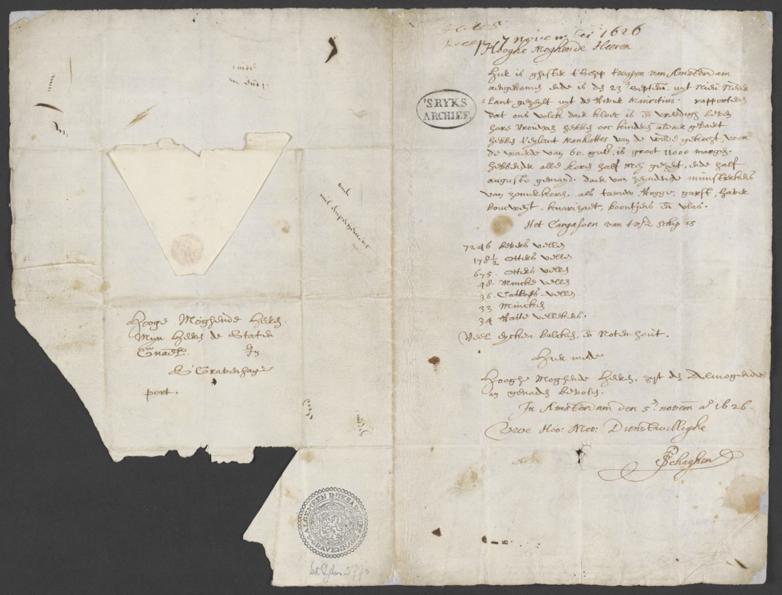Letter That Recorded 'Sale' of Manhattan for $24 on View at New-York Historical Society

Pieter Schagen's Manhattan letter
A nearly 400-year-old letter that documents the mythologized 'purchase' of the island of Manhattan from the Indigenous peoples who inhabited it is on view now through July 14, at the New-York Historical Society.
Written by Dutch government official Pieter Schagen, the letter notes “our people…have purchased the Island Manhattes from the Indians for the value of 60 guilders.” A 19th century historian converted the 60 guilders into dollars, which gave rise to the popular belief that the Dutch bought Manhattan for $24. The letter, on loan from the Dutch National Archives in the Hague, where it is not on public display, is the only record that exists of that 'purchase' which was later followed by similar transactions by which Europeans took control of the continent of North America from its Native inhabitants.
In response to the display of the letter, leaders of the Lenape people have issued a public reflection on the land transfer including this excerpt:
THIS DAY, we look at that historical letter with no wampum or treaty attached, saying the island of Manahahtáanung was purchased for 60 guilders. Ancestor, who could have known that a Dutch colonizer’s written words and 60 guilders would bring 400 years of devastation, disease, war, forced removal, oppression, murder, division, suicide, and generational trauma for your Lenape people?
Russell Shorto, an expert on Dutch New York and author of the book The Island at the Center of the World, has brought the letter to New York as part of a special exhibit he has curated - New York Before New York: The Castello Plan of New Amsterdam - on the occasion of the 400th anniversary of the Dutch founding of a colony that would give rise to New York City.
“Assembling the artifacts from four centuries ago was a delight, but working with the Lenape chiefs has been the most rewarding part of the experience,” he said. “I think many Americans are unaware that the ancestors of the people who once hunted and fished on Manhattan Island are still with us. The Lenape have experienced four centuries of suffering and displacement. The purpose of the exhibit is to explore the roots of New York City. We can no longer ignore the fact that the city’s remarkable history was built on a foundation of pain.”
Through documents and objects, the installation explores how settlers, Indigenous people, and enslaved Africans experienced the world illustrated in the Castello Plan, a map depicting New Amsterdam at the peak of its settlement circa 1660, just before the English took control, on loan from Florence, Italy.















